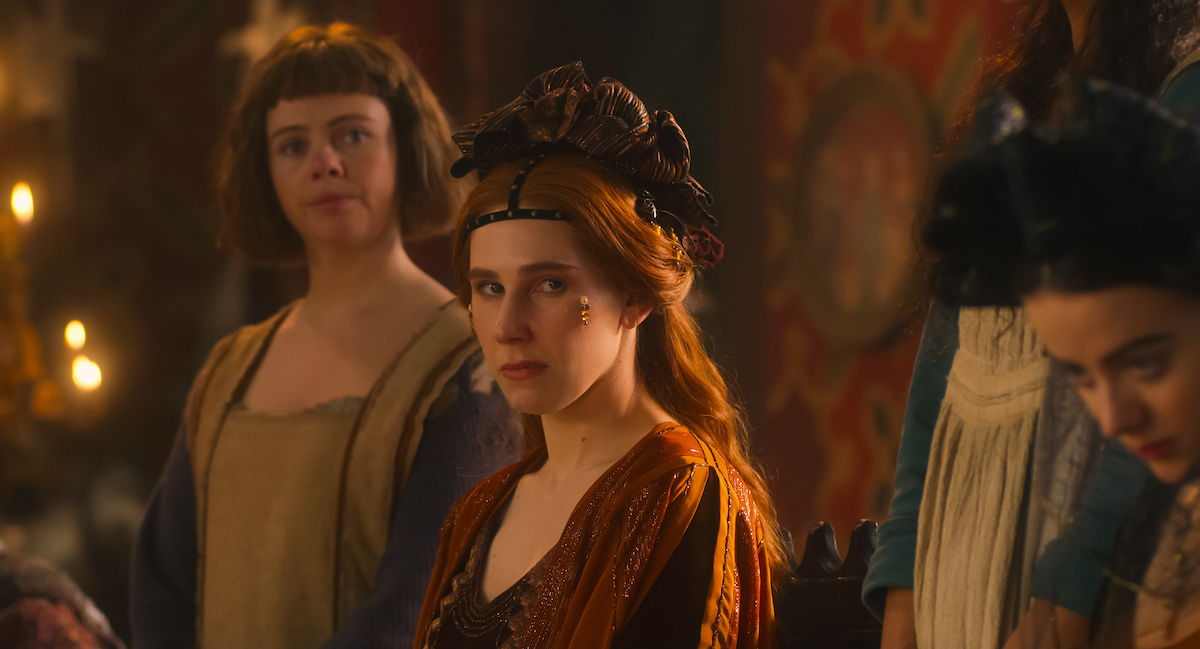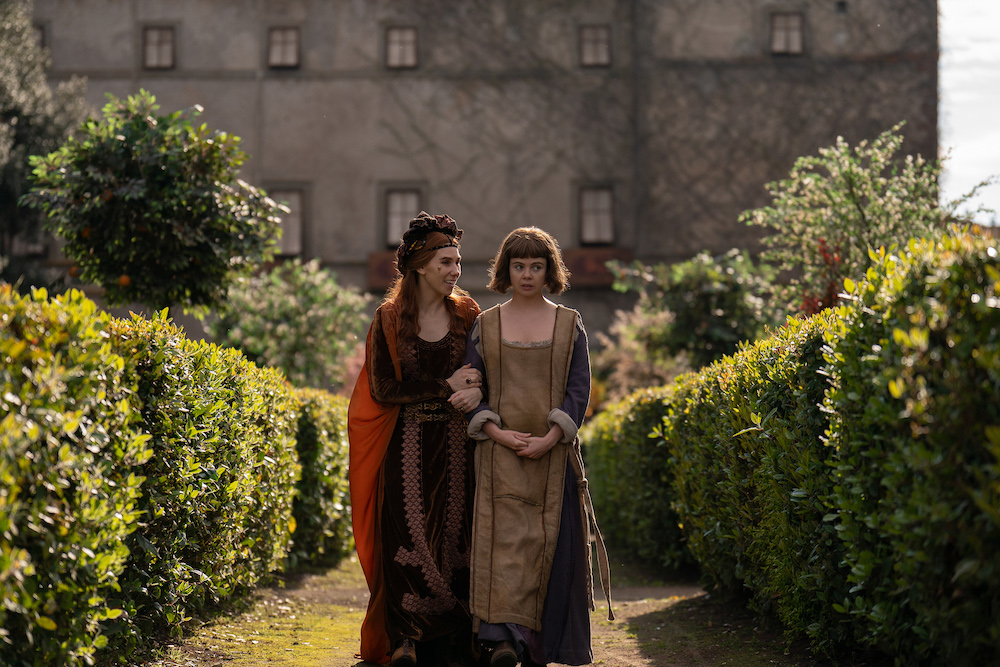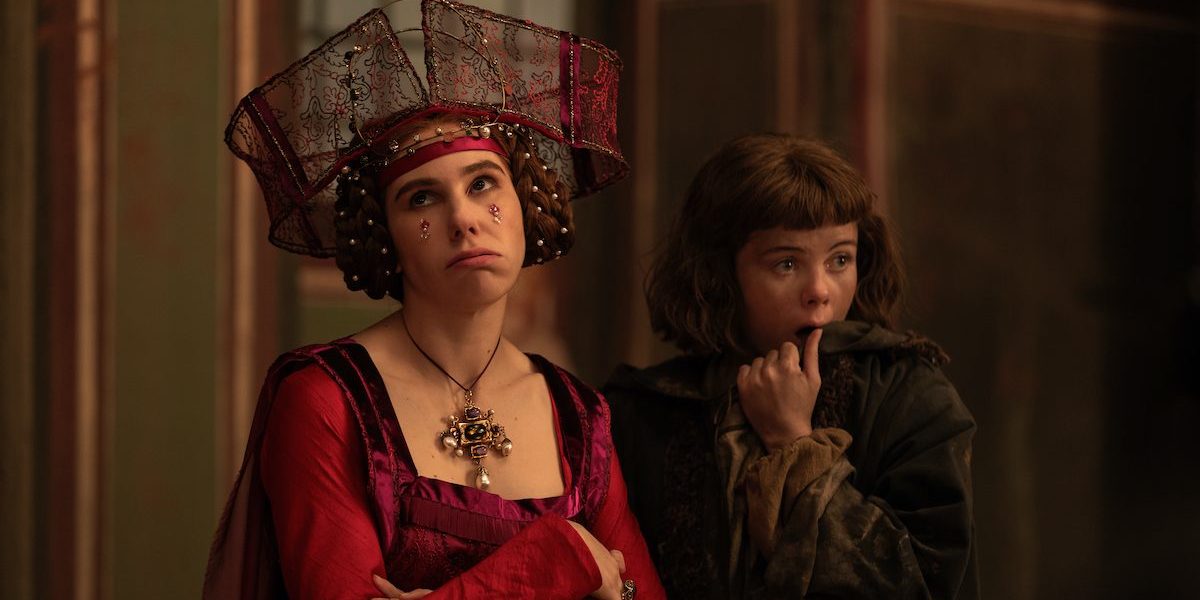Netflix’s ‘The Decameron’ introduces a group of people who indulge in feasts and debauchery while the world outside the walls of their residence burns to the ground. Ten people reside in Villa Santa to save themselves from the pestilence that has also claimed their loved ones. Amongst this group are Viscontessa Pampinea and her maid, Misia. Pampinea is betrothed to the owner of the villa but has yet to meet him. This is her only chance to escape her miserable existence at her house and, by extension, for Misia. Through their characters, the show weaves a complex tale of a master-servant relationship and gives the audience a lot to think about. SPOILERS AHEAD
The Fictional Pampinea and Misia Explore Toxic Codependency
Played by Zosia Mamet and Saoirse-Monica Jackson, Pampinea and Misia in ‘The Decameron’ are entirely fictional. Pampinea’s character is borrowed from Giovanni Boccaccio’s book, which the show is loosely inspired by, but the arc it follows is entirely original. In the book, the characters are more involved in telling stories of their own, but the show takes a stronger narrative approach, fleshing them out through their actions. Misia’s character is an original to the TV show and was created to present a contrast to Pampinea’s wealth and entitlement.

Mamet described Pampinea as if “a toddler with a personality disorder had a baby with a crotchety old lady,” and this is the approach she took the role of. Narcissistic and entirely nil in self-awareness, the character displays is acutely manipulative, especially of Misia, whose devotion to her knows no bounds, even though she starts to question this devotion later on. Pampinea knows how much she relies on Misia and cannot function without her, but that doesn’t stop her from being abusive towards her.
Pampinea is loud in words and actions, which is also reflected in her appearance. It’s not just the bright colored clothes she wears, but also her make-up and the things she adorns her face with, which show that she is trying to put up for feeling too old and less beautiful. She feeds on Misia’s loyalty, which eventually starts to break the servant girl. Actress Saoirse-Monica Jackson approached Misia as “the most sad and pathetic character in the villa” and “a lap dog for Pampinea” but also found reason in her behavior.
While we don’t see much of Misia’s backstory, Jackson imagined one for her. She saw a young Misia hailing from a family where everyone had worked as a servant. Misia is the youngest of all siblings, which would have made her prone to bullying from her elder siblings. Through this, Jackson self-explained Misia’s unending loyalty to Pampinea, even though she suffers emotional and psychological abuse from her and sees it as love.
The Actors Tapped Into Their Chemistry to Portray the Bond Between the Characters

When we first meet Misia and Pampinea, they have already been together for many years and embody the meaning of “the claws of love run deep.” The actors needed to bring this baggage of years of familiarity and stuck in a toxic loop for their characters, but their task became easier due to their instant chemistry. Mamet and Jackson bonded with each other pretty well. Mamet later praised Jackson for bringing the emotional truth into Misia’s story and said she “cared for Misia in a way that no one else could.”
Jackson also acknowledged her instant connection with Mamet as one of the reasons they brought the already-established relationship between Pampinea and Misia to the fore. The magic of their chemistry wasn’t lost on the writers and directors, who allowed the actresses to improvise their lines and scenes. They were encouraged to riff off each other, bringing a sense of realism to their relationship. This is why the end of their story rings so much more strongly than any other character’s.
Read More: The Decameron: Is Villa Santa a Real Place in Italy?


You must be logged in to post a comment.